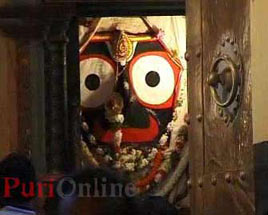Narayana is the manifestation of the god Visnu linked with the avataras, or worldly descents of Visnu. Narayana is said to live on Svetadvipa, and to sleep floating on the Milky Ocean that surrounds the island.
Because of Narayana's location here, Svetadvipa was considered a place of pilgrimage by the sages and epic heroes. Rama comes to the island to make offerings to the ancestors, and the sage Narada came to visit Narayana.
Location
Svetadvipa is always located by Hindu texts in the Milky Ocean.
The Ramayana, Mahabharata, Bhagavatapurana, Laghubhagavatamrta and Brhat Samhita all mention the location of the Milky Ocean and place it in the general direction of the East.
When the Vanara allies of Rama in the Ramayana set out to search the four regions of the world -- East, South, West and North -- for Sita, they visited the Milky Ocean while in the eastern region.
The latter Hindu astronomers like Bhaskara and Lalla also place the Milky Ocean in the southern latitudes. According to the Laghubhagavatamrta, it was placed south of the Salt Sea that surrounded Jambudvipa (Indian subcontinent):
"East of Sumeru (Mt. Meru) is the ocean of milk, in which there is a white city on a white island where the Lord can be seen sitting with his consort, Laksmiji on a throne of Sesa. That feature of Visnu also enjoys sleeping during the four months of the rainy season. The Svetadvipa in the milk ocean is situated south of the ocean of salt."
The southern orientation in relation to the Salt Sea might refer either to the Sunda Strait or the Strait of Malacca, both of which are rather southward in latitude when compared to India.
So the Milky Ocean would then be the South China Sea.
According to the Mahabharata, this sea became colored like milk after a great eruption-like event connected with the churning episode and Mount Mandara.
The name could also refer to the phenomenon of bioluminescence as often occurs in the tropical oceans caused usually by marine mollusks and crustaceans like the salpa and pyrosoma, and also sometimes by the accumulation of dead animal tissue in the sea. This occurrence is called a "milk sea" to this day.
George Bennett while traveling through Southeast Asia in the 19th century describes the phenomenon:
Perhaps the beauty of this luminous effect is seen to the greatest advantage, when, the ship lying in a bay or harbour, in tropical climates, the water around has the appearance of a sea of milk. An opportunity was afforded me when at Carite, near Manilla, in 1830, of witnessing for the first time this beautiful scene. As far as the eye could reach on the extensive bay of Manilla, the surface of the tranquil water was one sheet of this dull, pale phosphorescence, and brilliant flashes were emitted instantly on any heavy body being cast into the water, or when fish sprang from it, or swam about. The ship seemed, on looking over its side, to be anchored in a sea of liquid phosphorus; whilst in the distance the resemblance was that of an ocean of milk.
However, bioluminscence is rather common in all tropical seas, and the Mahabharata links the sea's color with the deposits of ash and debris flowing down rivers from the flaming Mandara into the ocean.
The ash turns not only the sea white, but the surrounding region the same color, and hence the name Svetadvipa, the "White Island." Similar descriptions of whiteness, are given for the isle of the immortals, Penglai, in Chinese literature.
Svetadvipa is also specifically set in the East by the Mahabharata, Bhagavatapurana and Laghubhagavatamrta. It is said to be located in the northern portion of the Milky Ocean.
In Iranian literature, the Varkash Sea, where the White Haoma grows, appears to equate to the Milky Ocean.
Muslim geographers placed the regions around the Varkash Sea like Kangdez, the fortress of the immortals, in the furthest East Indies. Al-kashi, in the 15th century even gives coordinates for the locations.
According to tradition, King Indrakyumna found a vata tree log (Ficus bengalensis linn, Ficus indicus) from Svetadvipa from which the first image of Jagannatha was made at the famous temple in Puri.
The idea of the log god Jagannatha floating over the sea from Svetadvipa reminds us the story mentioned above of Narayana (Visnu) sleeping on a bed of snakes in the Milky Ocean during the four months of the rainy season.
It is during the summer monsoons that winds from the southeast bring storms to East India and then across India in a northwesternly direction.

Jagannatha images like this one are now made with trees like the Nimba. The original image is said by tradition to have come from a log that floated across the sea from Svetadvipa to Orissa in Eastern India. Source: http://www.flickr.com/photos/gaurangapada/sets/72057594050803121/
Regards,
Paul Kekai Manansala
Sacramento
References
Bennett, George. Wanderings in New South Wales, Batavia, Pedir Coast, Sumatra, and China., 1834.
No comments:
Post a Comment